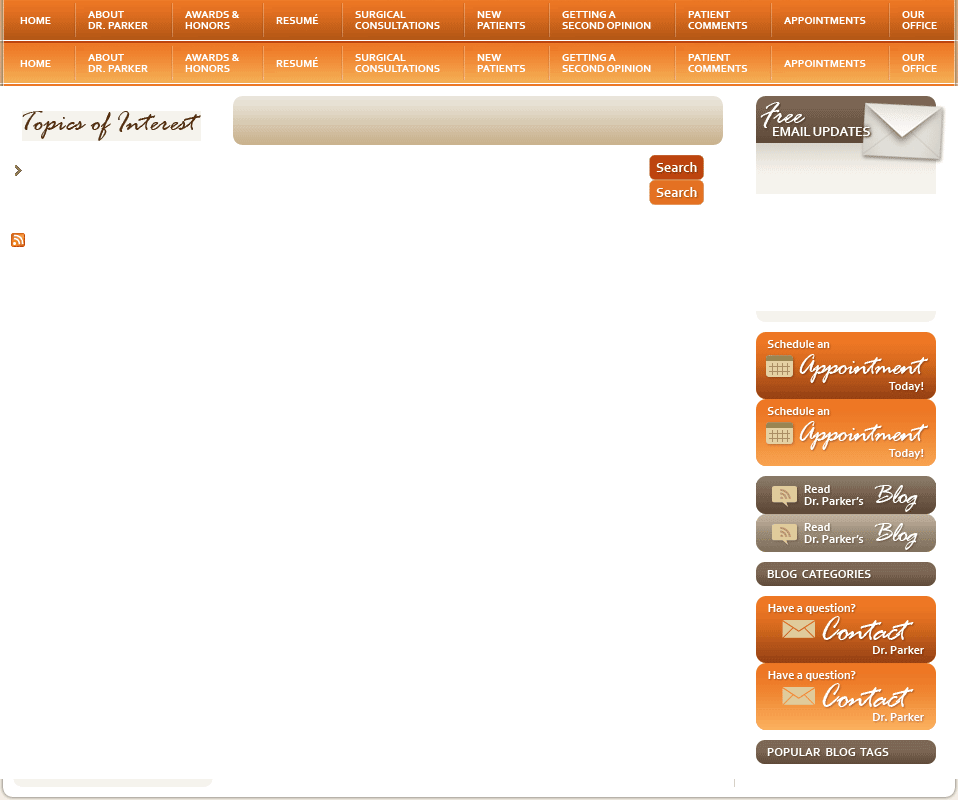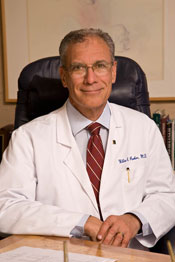UCLA Gyn Subspecialties Group
1450 Tenth Street, Suite 404
Santa Monica, CA 90401
(310) 451 8144 (phone)
Disclaimer: it is important for you to follow your own doctor’s instructions.
HOSPITAL RECOVERY
In the hospital, the nurses will remove the bladder catheter a few hours after surgery and they will ask you to sit in a chair and walk to the bathroom the night of surgery. You will have the ON-Q pain pump (see below), but if you need other pain medication, ask the nurses and they will give it to you. By the morning after surgery, you will be eating regular food and you will be able to walk in the hall. Recent studies of this “enhanced surgical recovery” show that a quicker return to normal activities and diet was associated with faster patient recovery and a shorter hospital stay.
ACTIVITY AFTER SURGERY:
- No strenuous exercise or intercourse for 4-6 weeks
- You may start walking for exercise on day 1
- Walking is the best activity following surgery. You can walk up and down stairs, outside, and on a treadmill. Walking will keep your circulation going and build back your stamina.
- Fatigue: fatigue is extremely common after surgery and may last many weeks.
- Iron – to help build back any blood lost during surgery. Either Fergon or SlowFe – 1-3 times a day along with 1,000mg of vitamin C (helps with the absorption of iron)
- You may start driving when you are no longer taking narcotic pain medication and you feel it is SAFE for you to drive.
- Showers only (no baths) for the first 2 weeks
PAIN/DISCOMFORT MANAGEMENT
- For pain, we will prescribe either Norco 5/320mg or Percocet 5/325mg for you to take once you get home.
- Days 2-3 may be worst, pain-wise
- Some cramping and shooting pains are normal, even in areas away from the incisions
- Do not drive under the influence of narcotic pain medication
- “ON-Q” pain pump: I use an innovative device to relive post-operative pain called the ON-Q pain pump. As we are closing the incision, two tiny plastic tubes are inserted underneath the incision. The tubes are connected to a tennis ball sized pump that holds a solution of local anesthesia. The pump slowly and automatically pushes the local anesthetic into the incision – exactly where you need it You don’t need to touch it). The ON-Q pump greatly reduces the need for injected narcotic pain medication doesn’t cause the grogginess that often accompanies narcotics. The device lasts 3-4 days and then is easily, and absolutely painlessly, removed in the office when the suture is removed.
- Lowering, raising and turning yourself will hurt (try using your arms instead of abs)
- Urination may burn/pinch initially, but will get easier (avoiding caffeine). Taking D-Mannose helps.
PERIODS
- Some bleeding and/or clumpy discharge is normal for a few weeks.
- Periods won’t be normal again for 3-4 cycles
CALL US AT 310-451-8144 FOR:
Fever over 100.4 degrees F, bad pain unrelieved by pain medications, heavy bleeding, vomiting, dizziness, pus-like drainage from the wound or other concerns.
DIET AND BOWEL ISSUES
- No dietary restrictions
- Avoid foods that cause gas such as broccoli, cauliflower and brussel sprouts
- No alcohol if taking narcotic pain medications
- Chewing gum helps with bowel function
- Walking helps bowel function
- Constipation is normal for a few days after abdominal surgery. You may take Metamucil (fiber) or colace as needed.
- Expect some gas discomfort/pain. Gas pain can be relieved by walking, taking medication (Mylicon, Gas-X) and chewing gum. Bending your legs while lying on your back may also help.
- Bloating (“swelly belly”) is normal for up to 6-8 weeks and will go away by itself. Surgery irritates and slows down the intestines and they retain more gas and stool. Some women find that an abdominal binder reduces pressure on the incision and helps them feel more support. You can buy an abdominal binder at a surgical supply store or pharmacy.
INCISION HEALING
- Skin incision – I close the skin incision with a suture technique that I learned from a plastic surgeon. I use one continuous suture that is removed about 5-7 days after surgery, so that no suture material is left under the skin. This technique decreases the chance of a thick scar. I then place steri-strips (like band-aids) across the incision to take the tension off of the skin, which also decreases the risk of a thick scar. The suture is quickly and painlessly removed in the office by our nurses and, if needed, the steri-strips are replaced. There are many layers of suture below the skin holding the incision together and these sutures dissolve a few months after surgery.
- It is OK to shower with steri-strips (do not scrub the wound). You can remove the steri-strips after a week. After the steri-strips are removed, I suggest you buy Scar Away at the drug store. Scar away is a silicon bandage (like a large band-aid) and you keep it on the incision for as many hours a day as you can. Over time, the scar away thins and lightens the incision so that it heals more nicely.
- Bruising: bruising around the incision(s) is very common, even beyond the surgery area, for a few weeks after surgery. Cold packs can keep the incision swelling down and the bruising will go away by itself.
- Incision “Shelf”: the first scar tissue that forms in the incision is made up of a thick, stiff collagen, which pulls the scar inward and leads to a “shelf” over the incision. Over the next 3-6 months, the first collagen is slowly replaced by a more elastic collagen and the incision becomes flat with the rest of the skin.
- Numbness: when we make the initial incisions to get to the uterus, we stretch, tear or even cut the very small nerves that go to the skin on the abdomen. As a result, it is very common to have numbness, tingling, burning or itching above the incision for a few months after surgery.
APPOINTMENTS AFTER SURGERY:
- Suture and ON-Q pain pump removal 5-7 days after surgery – with Dr. Parker’s nurse or nurse practitioner
- Appointment with Dr. Parker 2 weeks after surgery
- Appointment with Dr. Parker 6 weeks after surgery
SUGGESTED TO WEAR/BRING TO THE HOSPITAL
- Comfortable slip-on flat shoes
- Pants or skirt with elastic or drawstring waistband
- Pillow for the car ride home (leave in car to put between your stomach and seat belt)
- Lip balm (your mouth may be parched)
- Your ID
- Advance directives (optional)
BEFORE SURGERY – SUGGESTED SHOPPING LIST
- Throat lozenges: Sometimes the tube placed down your windpipe (trachea) can cause irritation which can feel like a sore throat. At times, this irritation can lead to a not very pleasant feeling cough. Lozenges can help soothe your throat and also help minimize the coughing.
- Stool softener: Many types are available: Smooth Move tea, Colace, Peri-Colace (stool softener and mild laxative together). High-fiber foods.
- Anti-gas pains: Mylicon, Maalox, Gas-X or peppermint tea
- Three days of groceries/easy-prep foods, since you won’t feel like cooking. Consider broth/soup, fruits + veggies (avoid gassy ones like broccoli, cauliflower and Brussels sprouts), rice, crackers, juice, yogurt.
BEFORE MYOMECTOMY
We ask women to insert 2 tablets (Cytotec) vaginally about 2 hours before surgery. Cytotec has been shown to decrease blood loss during myomectomy surgery. However, it can also cause cramping, vaginal bleeding and, sometimes nausea. If you have any of these symptoms, they are normal (and we apologize), but the medication does help decrease surgical blood loss.



